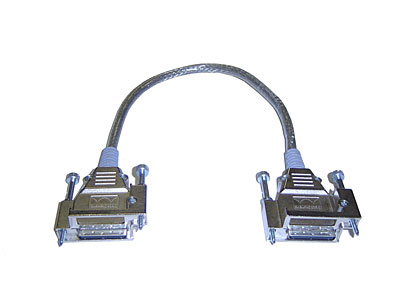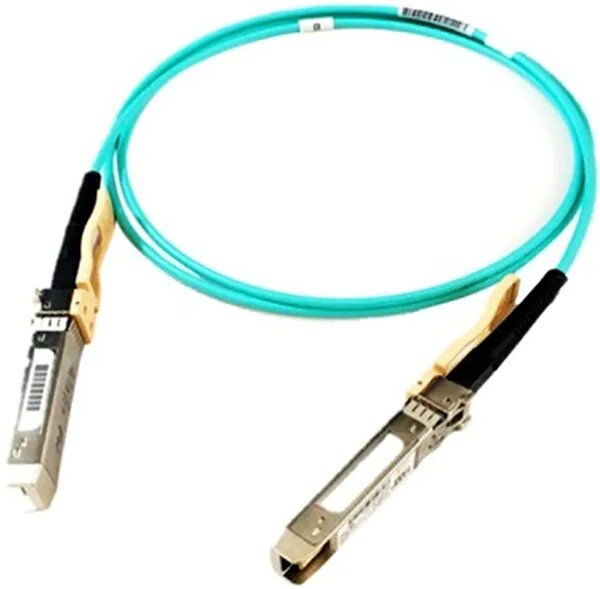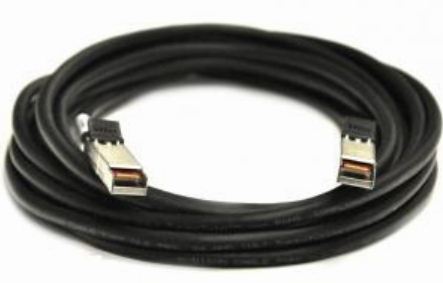Cisco
110 –
115
of
115
Availability
Sort by
Advance Filters
Cisco
Cisco CAB-SPWR-150CM Cisco CAB-SPWR-150CM InfiniBand/fibre optic cable 1.5 m Black
The Cisco StackPower cables are thick but flexible, and they carry power as well as a data signal to provide a communications channel among the switches in the power stack. StackPower and XPS cables are keyed and have colored bands on the ends to help you understand what cable plugs into what switch or XPS.A StackPower cable has colors bands on the cable ends, green on one end and yellow on the other end. This cable can be used between Catalyst 3750-X switches and an XPS. Note that the connector with the blue band can only connect into a Catalyst 3750-X switch while the connector with the yellow band can connect to a Catalyst 3750-X or an XPS.An XPS cable has a color band on the cable ends as well, red on one end and yellow on the other end. This cable can only be used to connect Catalyst 3750-X or 3560-X switch to an XPS. Note that the connector with the red band can only connect to an XPS while the connector with the green and blue band can connect to Catalyst 3750-X or 3560-X switch.The Cisco Catalyst 3750-X Series Switches come with four power supply options and any of them can be used on any switch in a stack and in any combination.
Part# CAB-SPWR-150CM
SKU S19454
Cisco
Cisco SFP-25G-AOC5M Cisco 5M CBL 25GBASE ACTIVE OP SFP28 InfiniBand/fibre optic cable Grey
The Cisco® 25GBASE SFP28 (Small Form-Factor Pluggable) portfolio offers customers a wide variety of high-density and low-power 25 Gigabit Ethernet connectivity options for data center and high-performance computing networks applications. The 25G Modules are based on SFP28 form factor
Part# SFP-25G-AOC5M
SKU S19454
Cisco
Cisco SFP-H10GB-CU1M Cisco SFP-H10GB-CU1M InfiniBand/fibre optic cable 1 m SFP+ Black
Crossover and straight-through cables are used in order to connect switch ports or interfaces to network devices. Consult this table in order to see when to use each of these cable types. Find the device in the left-hand column and match it up with another device in the top row. The intersection of these two devices gives you the cable type used to connect them together.
Part# SFP-H10GB-CU1M
SKU S19454
Cisco
Cisco CAB-SS-V35FC= Cisco Smart Serial WIC2/T 26 Pin -V.35 Female DCE serial cable Blue
HOW SURGE EVENTS HAPPEN In a normal equipment environment there are reasonable threats from Electrostatic Discharge (ESD) and lightning transients which can cause loss of data integrity and permanent damage to equipment if not controlled. ESD threats are generated by personnel movement, which causes triboelectric (rubbing causing a separation of charge) charges to accumulate on equipment or clothing and then be discharged through hand or tool "touch". This discharge can represent several thousand volts at 10 to 30 amps of current. There are two primary threats from an ESD event. These are the peak current of the discharge and the resulting electromagnetic field. Should the input to the device not be protected from this ESD threat, as little as 100 milli-Joules can cause permanent failure to an input device at the silicon die level. Lightning also can create a large disturbance and delivery destructive energy to the equipment. These lightning events cause differential voltages to develop as a result of inductance in the protective earth ground path to the equipment. During a direct lightning strike it is possible to measure peak currents into the Kilo Amp range. These events can occur both at the facility as well as outside the facility along utility power lines. When they occur on the power line outside of the facility peak currents can be extended in time due to the additional inductance of the power line. A normal event may be 10 usec zero to peak, with a decay of 200 usec. These currents are called longitudinal. The Cisco surge protection cable will adequately prevent this transient damage from occurring to within the industry standards for lightning protection devices. A good equipment chassis protective ground is strongly recommended to assure adequate protection.EFT disturbances occur as a result of arcing contacts in electro-mechanical switches and relays commonly found in an industrial environment. The electro-mechanical switches are used to connect and disconnect inductive loads. Like ESD, EFT can be especially fatal on data and I/O lines. The fast rise time of the EFT pulses demand similar protection as ESD pulses.CONFIGURATIONS THAT ARE SUBJECT TO SURGE EVENTSThere are several hardware configurations and applications that are more subject to damage from ESD events. These configurations include the following:- Locations Subject to Electrical Storms-Any location where electrical storms are common is a good candidate site for surge protection on the serial ports;- Unshielded Cables-If unshielded cables are used to connect to the serial port, it is much more likely that electrical discharges will be picked up by the cabling and damage the serial port;- Long Cable Runs-The longer the cable, the more susceptible it is to surge events, even if the cable is shielded;- Outside Wiring-If the cable runs outdoors, it is more susceptible to surge events;- Different Earth Grounds-If the router and the device at the other end of the serial cable are connected to different earth grounds, then the cable can become a conduit for current that equalizes different ground potentials;- Installations with Multiple Serial Port Failures-If an installation has experienced multiple serial port failures in the past, it is a good candidate for surge protection;
Part# CAB-SS-V35FC=
SKU S19454
Cisco
Cisco AIR-CAB020LL-R Cisco Aironet 20-Foot Low-Loss Cable Assembly, 1 RP-TNC Plug and 1 RP-TNC Jack, 90-Day Limited Hardware Warranty (AIR-CAB020LL-R)
The Cisco Aironet AIR-CAB020LL-R 20-Foot Low-Loss Cable Assembly is designed to connect select Cisco Aironet access point models to an antenna. This antenna cable has one RP-TNC plug and one RP-TNC jack.
Part# AIR-CAB020LL-R
SKU S19454
Get a Quote

Item(s) added to cart

©2025 IT VISION NETWORKS CANADA INC – All Rights Reserved. BN: 717291223 OCN: 1001150813

 0
0







